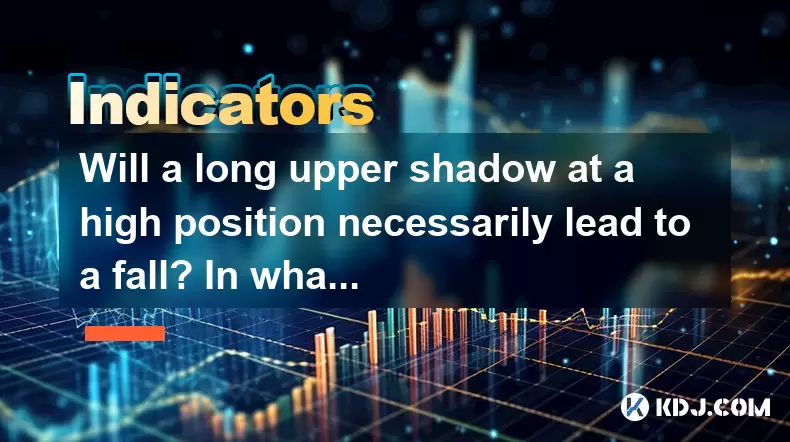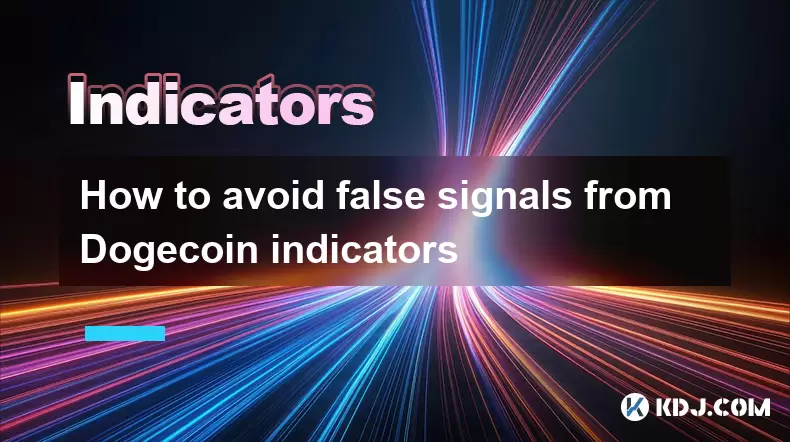-
 Bitcoin
Bitcoin $108,250.0992
0.11% -
 Ethereum
Ethereum $2,515.9404
0.03% -
 Tether USDt
Tether USDt $1.0003
0.00% -
 XRP
XRP $2.2166
-0.19% -
 BNB
BNB $656.5904
0.29% -
 Solana
Solana $147.4122
-0.58% -
 USDC
USDC $1.0000
-0.01% -
 TRON
TRON $0.2830
0.06% -
 Dogecoin
Dogecoin $0.1641
0.27% -
 Cardano
Cardano $0.5739
-0.19% -
 Hyperliquid
Hyperliquid $39.1463
-0.11% -
 Sui
Sui $2.8882
-0.02% -
 Bitcoin Cash
Bitcoin Cash $487.6428
0.31% -
 Chainlink
Chainlink $13.2097
0.07% -
 UNUS SED LEO
UNUS SED LEO $9.0308
0.10% -
 Avalanche
Avalanche $17.8608
0.13% -
 Stellar
Stellar $0.2379
-0.06% -
 Toncoin
Toncoin $2.7400
-0.39% -
 Shiba Inu
Shiba Inu $0.0...01144
-0.36% -
 Litecoin
Litecoin $87.5467
0.66% -
 Hedera
Hedera $0.1538
0.22% -
 Monero
Monero $315.5479
0.36% -
 Dai
Dai $1.0000
0.00% -
 Polkadot
Polkadot $3.3523
-0.71% -
 Ethena USDe
Ethena USDe $1.0003
0.01% -
 Bitget Token
Bitget Token $4.3960
-1.03% -
 Uniswap
Uniswap $7.2663
4.19% -
 Aave
Aave $272.8619
2.04% -
 Pepe
Pepe $0.0...09676
-0.18% -
 Pi
Pi $0.4586
-2.87%
Will a long upper shadow at a high position necessarily lead to a fall? In what cases may it be a wash?
A long upper shadow in crypto charts suggests potential bearish reversal, especially after an uptrend or at resistance levels, but requires confirmation from volume and other indicators.
Jul 06, 2025 at 02:08 am

Understanding the Significance of a Long Upper Shadow in Cryptocurrency Charts
A long upper shadow, often seen on candlestick charts, is formed when the price rises significantly during a session but then reverses to close much lower than its peak. In cryptocurrency trading, this pattern is frequently interpreted as a bearish signal. However, it does not always guarantee an immediate downturn. The key lies in understanding the context and surrounding market conditions.
The presence of a long upper shadow at a high position may suggest that buyers are losing momentum, and sellers are stepping in to push the price down. This can be particularly significant if it occurs after a sustained uptrend or near a known resistance level. Yet, interpreting such a candlestick without additional confirmation can lead to premature conclusions.
When Does a Long Upper Shadow Signal a Reversal?
A long upper shadow at a high position may indicate a reversal under specific conditions:
- If it appears after a strong bullish move, especially when volume spikes during the candle formation.
- When it coincides with overbought levels on oscillators like RSI or MACD.
- If multiple candles with long upper shadows form in succession near the same resistance zone.
In these cases, the rejection of higher prices becomes more credible. Traders often watch for a follow-through candle that closes below the low of the shadowed candle to confirm a potential trend reversal.
Scenarios Where a Long Upper Shadow May Be a Wash
Despite the typical bearish interpretation, there are situations where a long upper shadow doesn’t necessarily lead to a fall:
- Strong support nearby: If the price finds solid support just below the shadow’s closing level, the pullback might be temporary.
- Bullish continuation patterns: Sometimes, a long upper shadow forms during consolidation phases within an ongoing uptrend, indicating profit-taking rather than capitulation.
- High volatility environment: In crypto markets, especially altcoins, sharp moves up and down are common. A long upper shadow might simply reflect noise rather than meaningful sentiment shift.
In such environments, traders should avoid making impulsive decisions solely based on this candlestick pattern.
How to Analyze Volume and Other Indicators Alongside the Upper Shadow
Volume plays a crucial role in validating whether a long upper shadow is significant or not. A spike in volume during the formation of the candle suggests strong selling pressure, increasing the likelihood of a reversal. Conversely, if the volume remains low, the pattern might be less reliable.
Traders should also incorporate other technical tools such as moving averages, Fibonacci retracement levels, and chart patterns to gain a clearer picture. For instance:
- If the long upper shadow forms near a major Fibonacci resistance level (like 61.8%) and volume surges, the probability of a correction increases.
- If the price is still above a key moving average (e.g., 50-day EMA) and the RSI hasn't turned negative, the uptrend may still be intact.
Combining these indicators helps filter out false signals and improves the accuracy of trade setups.
Practical Steps to Trade Around a Long Upper Shadow in Crypto Markets
If you're considering trading based on a long upper shadow, here's how to approach it systematically:
- Identify the context: Is the candle forming after a significant rally or during a sideways phase?
- Check key levels: Does the shadow appear near a known resistance or a Fibonacci level?
- Observe volume: Was there a notable increase in volume during the candle's formation?
- Wait for confirmation: Look for a bearish follow-through candle before taking action.
- Use stop-loss orders: Place stops above the high of the shadowed candle to manage risk effectively.
- Monitor multi-timeframe charts: Check higher timeframes (like 4-hour or daily) to understand broader sentiment.
Avoid entering short positions immediately after seeing a single long upper shadow. Patience and confirmation are vital in volatile crypto markets.
Frequently Asked Questions
Q: Can a long upper shadow ever be bullish?
Yes, in rare cases, especially if the candle follows a downtrend and acts as a sign of rejection from lower levels. This would be considered a hammer-like pattern but inverted.
Q: How long should the upper shadow be to be considered significant?
Typically, the upper shadow should be at least twice the length of the real body. The longer the shadow relative to the body, the stronger the potential reversal signal.
Q: Should I ignore all long upper shadows if they occur in a strong uptrend?
Not necessarily. Even in uptrends, long upper shadows can indicate exhaustion. It's important to evaluate them alongside other factors like volume and support/resistance levels.
Q: What is the difference between a shooting star and a long upper shadow?
A shooting star is a specific candlestick pattern that appears after an uptrend and has a small body near the low with a long upper shadow. While similar, not all long upper shadows qualify as shooting stars.
Disclaimer:info@kdj.com
The information provided is not trading advice. kdj.com does not assume any responsibility for any investments made based on the information provided in this article. Cryptocurrencies are highly volatile and it is highly recommended that you invest with caution after thorough research!
If you believe that the content used on this website infringes your copyright, please contact us immediately (info@kdj.com) and we will delete it promptly.
- BNB, Nano Labs, and Binance: A $160 Million Crypto Play
- 2025-07-06 12:30:13
- Bitcoin, Taxing, and Fund Managers: Navigating the Crypto Maze in NYC
- 2025-07-06 12:50:14
- Debt Ceiling, Trump, and Bitcoin's Allure: A New York Minute on Fiscal Policy
- 2025-07-06 12:30:13
- Bitcoin, Ethereum, and Crypto Gains: What's Hot in the NYC Crypto Scene?
- 2025-07-06 13:10:15
- Zerion: Real-Time Portfolio Tracking Revolutionized
- 2025-07-06 13:10:15
- Bitcoin Transfer, Market Dip, and Speculation: Decoding the Crypto Whale's Moves
- 2025-07-06 12:35:13
Related knowledge

How to spot manipulation on the Dogecoin chart
Jul 06,2025 at 12:35pm
Understanding the Basics of Chart ManipulationChart manipulation in the cryptocurrency space, particularly with Dogecoin, refers to artificial price movements caused by coordinated trading activities rather than genuine market demand. These manipulations are often executed by large holders (commonly known as whales) or organized groups aiming to mislead...

What is the significance of a Dogecoin engulfing candle pattern
Jul 06,2025 at 06:36am
Understanding the Engulfing Candle Pattern in CryptocurrencyThe engulfing candle pattern is a significant technical analysis tool used by traders to identify potential trend reversals in financial markets, including cryptocurrencies like Dogecoin. This pattern typically consists of two candles: the first one is relatively small and indicates the current...

Dogecoin monthly chart analysis for long term investors
Jul 06,2025 at 10:08am
Understanding the Dogecoin Monthly ChartFor long-term investors, analyzing the monthly chart of Dogecoin (DOGE) provides a macro view of its price behavior over extended periods. The monthly chart captures major trends, key resistance and support levels, and potential reversal zones that are crucial for strategic investment planning. Unlike daily or hou...

How to manage risk using ATR on Dogecoin
Jul 06,2025 at 02:35am
Understanding ATR in Cryptocurrency TradingThe Average True Range (ATR) is a technical indicator used to measure market volatility. Originally developed for commodities, it has found widespread use in cryptocurrency trading due to the high volatility inherent in digital assets like Dogecoin (DOGE). The ATR calculates the average range of price movement ...

How to avoid false signals from Dogecoin indicators
Jul 06,2025 at 06:49am
Understanding Dogecoin Indicators and Their LimitationsDogecoin indicators are tools used by traders to analyze price movements and make informed decisions. These include moving averages, Relative Strength Index (RSI), MACD, and volume-based metrics. However, these tools can sometimes generate false signals, especially in highly volatile markets like Do...

Dogecoin Donchian Channels strategy
Jul 06,2025 at 02:43am
What Are Donchian Channels?Donchian Channels are a technical analysis tool used to identify potential breakouts, trends, and volatility in financial markets. They consist of three lines: the upper band, which marks the highest high over a specific period; the lower band, which reflects the lowest low over the same period; and the middle line, typically ...

How to spot manipulation on the Dogecoin chart
Jul 06,2025 at 12:35pm
Understanding the Basics of Chart ManipulationChart manipulation in the cryptocurrency space, particularly with Dogecoin, refers to artificial price movements caused by coordinated trading activities rather than genuine market demand. These manipulations are often executed by large holders (commonly known as whales) or organized groups aiming to mislead...

What is the significance of a Dogecoin engulfing candle pattern
Jul 06,2025 at 06:36am
Understanding the Engulfing Candle Pattern in CryptocurrencyThe engulfing candle pattern is a significant technical analysis tool used by traders to identify potential trend reversals in financial markets, including cryptocurrencies like Dogecoin. This pattern typically consists of two candles: the first one is relatively small and indicates the current...

Dogecoin monthly chart analysis for long term investors
Jul 06,2025 at 10:08am
Understanding the Dogecoin Monthly ChartFor long-term investors, analyzing the monthly chart of Dogecoin (DOGE) provides a macro view of its price behavior over extended periods. The monthly chart captures major trends, key resistance and support levels, and potential reversal zones that are crucial for strategic investment planning. Unlike daily or hou...

How to manage risk using ATR on Dogecoin
Jul 06,2025 at 02:35am
Understanding ATR in Cryptocurrency TradingThe Average True Range (ATR) is a technical indicator used to measure market volatility. Originally developed for commodities, it has found widespread use in cryptocurrency trading due to the high volatility inherent in digital assets like Dogecoin (DOGE). The ATR calculates the average range of price movement ...

How to avoid false signals from Dogecoin indicators
Jul 06,2025 at 06:49am
Understanding Dogecoin Indicators and Their LimitationsDogecoin indicators are tools used by traders to analyze price movements and make informed decisions. These include moving averages, Relative Strength Index (RSI), MACD, and volume-based metrics. However, these tools can sometimes generate false signals, especially in highly volatile markets like Do...

Dogecoin Donchian Channels strategy
Jul 06,2025 at 02:43am
What Are Donchian Channels?Donchian Channels are a technical analysis tool used to identify potential breakouts, trends, and volatility in financial markets. They consist of three lines: the upper band, which marks the highest high over a specific period; the lower band, which reflects the lowest low over the same period; and the middle line, typically ...
See all articles

























































































